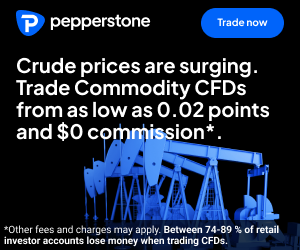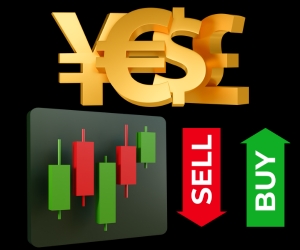In foreign exchange trading, the term “order” describes the instructions you give to your broker to buy or sell a currency pair. Among the many order types available, the market order is the most straightforward and widely used. It allows a trader to enter or exit a position immediately at the best available price, making it the backbone of daily FX activity. For both retail and institutional participants, understanding how market orders work is essential. They shape execution speed, trading costs, and the level of control you have over your positions. While simple in principle, market orders carry nuances that every trader should grasp before relying on them in live trading.

Order Basics
At its core, a market order is an instruction to buy or sell a financial instrument immediately, at the best price available in the market. In the context of foreign exchange, this means executing a transaction in a chosen currency pair—such as EUR/USD, GBP/JPY, or AUD/CAD—without delay. The defining characteristic of a market order is immediacy: it prioritises execution over price precision. Traders accept the prevailing market price rather than waiting for a specific rate to be reached. This feature makes market orders the most common entry and exit method in FX trading, especially in fast-moving or highly liquid environments.
How Market Orders Work
When a trader places a market order, the broker’s system scans available liquidity providers—such as banks, market makers, or electronic communication networks (ECNs)—to find the best possible price. The order is then filled at that price, or at the next best if liquidity is thin. In practice, this process occurs within fractions of a second. The simplicity of a market order means that execution is almost guaranteed in normal market conditions, provided there is sufficient liquidity. However, the actual fill price may differ slightly from the last quoted rate, a phenomenon known as “slippage.” Understanding slippage is crucial for traders who rely on precise entry or exit points.
The Role of Liquidity
Liquidity—the ease with which an asset can be bought or sold without affecting its price—is central to how market orders function. In highly liquid pairs such as EUR/USD, market orders are usually filled instantly at or very close to the quoted rate. By contrast, in less liquid pairs or during volatile conditions, slippage can widen the gap between expected and executed prices. This distinction highlights why market orders are well suited for major currency pairs but may be riskier when trading exotic pairs or thinly traded sessions. Traders must balance the need for immediate execution with the potential costs of slippage in different liquidity environments.
Advantages of Market Orders
The biggest advantage of a market order is certainty of execution. In fast-moving markets, the ability to enter or exit a position immediately can be critical, particularly for traders reacting to news events or managing risk. Market orders are also simple to use, making them accessible for beginners. Unlike limit or stop orders, there is no need to specify exact price levels or conditions. For institutional traders, market orders facilitate large transactions by tapping directly into available liquidity pools. This combination of simplicity, speed, and reliability explains why market orders remain the default option for countless FX participants.
Disadvantages and Risks
Despite their advantages, market orders carry risks that cannot be ignored. Chief among these is slippage. When markets are volatile—such as during central bank announcements or geopolitical shocks—the difference between expected and executed prices can be substantial. In extreme cases, this can turn a profitable trade into a loss or exacerbate losses on an exit. Another limitation is the lack of price control: by choosing immediacy, traders surrender the ability to dictate entry or exit levels. This can be problematic for strategies that rely on precision, such as scalping or breakout trading. Finally, execution costs, including spreads and potential commissions, must be considered, as they directly impact profitability when using market orders frequently.
Market Orders vs Other Order Types
To fully appreciate market orders, it is useful to compare them with alternative order types. Limit orders, for instance, execute only at a specified price or better, giving traders control but sacrificing certainty of execution. Stop orders, meanwhile, trigger once a set price level is reached, often used to enter trades on momentum or to protect against losses. In contrast, market orders are unconditional—they act immediately regardless of price. Each order type serves different strategic purposes, and experienced traders often combine them. Nevertheless, market orders remain the foundation upon which most trading activity is built, reflecting their unmatched speed and reliability.
Technological Advances in Execution
Modern trading platforms have enhanced the functionality of market orders. Algorithms now optimise execution by routing orders to multiple liquidity providers simultaneously, reducing slippage and improving fill quality. Features such as “market with protection” orders, which cap the maximum slippage tolerated, add another layer of control. High-frequency trading firms rely heavily on rapid market order execution, underscoring its centrality in today’s FX ecosystem. For retail traders, user-friendly interfaces on platforms like MetaTrader or cTrader make placing market orders almost instantaneous, even from mobile devices. These technological improvements have reinforced the relevance of market orders in an increasingly automated and globalised marketplace.
Practical Examples
Consider a trader monitoring the EUR/USD pair during a European Central Bank (ECB) press conference. A dovish statement weakens the euro, prompting the trader to sell immediately. A market order ensures the position is executed without delay, capturing the move as it unfolds. Alternatively, imagine a corporate treasurer needing to convert proceeds from a US dollar bond issue into euros. Using a market order provides quick execution at prevailing rates, allowing the company to manage its cash flows efficiently. These examples illustrate the practical utility of market orders across both speculative and corporate contexts.
Why Order Basics Matter
Understanding the basics of market orders is fundamental for anyone active in FX. These orders are the entry point into trading, the default mechanism for execution, and the benchmark against which other order types are measured. Knowing how they function, their advantages, and their risks equips traders with the tools to use them effectively. In a market where speed, precision, and risk management are intertwined, market orders remain indispensable. They are not merely technical instructions; they are the lifeblood of the forex market’s daily rhythm, shaping how currencies are exchanged and how opportunities are seized or lost.
Opening & Closing
Market orders are most commonly associated with the process of opening and closing positions. In forex trading, these two actions define the entire lifecycle of a trade: entering the market with an exposure to a currency pair, and later exiting it to crystallise profits or losses. The way traders manage these stages determines not only outcomes but also risk profiles. Understanding how market orders operate at both ends of a trade provides insight into why they remain the default execution tool for participants ranging from retail traders to institutional investors.
Using Market Orders to Enter Trades
When opening a trade, a market order gives a trader immediate access to prevailing market prices. For instance, a trader expecting the euro to strengthen against the dollar might enter a long EUR/USD position via a market order. This ensures instant exposure, which is especially important when reacting to breaking news, sudden technical signals, or momentum surges. The trade-off is the lack of price control: the position is entered at the best available rate, not necessarily at the price displayed when the order was placed. In highly liquid pairs, this difference may be negligible, but in less liquid environments, slippage can create meaningful discrepancies.
Immediate Execution vs. Strategic Precision
For traders prioritising immediacy, market orders are unmatched. However, they are less suited to strategies that require pinpoint accuracy in entry levels. For example, a technical trader who wants to buy only when EUR/USD dips to a specific support level would favour a limit order over a market order. The distinction illustrates how execution methods shape strategy. Market orders are most effective when capturing momentum, responding to unexpected events, or entering positions where small deviations in entry price are unlikely to disrupt the broader thesis.
Market Orders for Closing Trades
Closing a trade with a market order is often the fastest way to realise profits or cut losses. Traders use market orders to exit positions when conditions change rapidly or when other orders, such as stop-losses or take-profits, have not been triggered. For example, if geopolitical headlines suddenly reverse market sentiment, a trader may prefer to close a position immediately rather than risk further adverse moves. In this sense, market orders serve as a safeguard, offering certainty of execution even in turbulent conditions. For institutions managing large portfolios, market orders also provide a straightforward mechanism to rebalance exposures swiftly.
Impact of Liquidity on Entry and Exit
Liquidity plays a defining role in how market orders perform at both the opening and closing stages. During peak trading hours—such as the London–New York overlap—market orders are filled with minimal slippage, making them efficient for entering and exiting trades. Conversely, during illiquid periods, such as after major sessions close, spreads widen and execution quality can deteriorate. For traders, this underscores the importance of aligning market order use with liquidity conditions. Timing a market order well can reduce costs and improve overall outcomes, while poorly timed orders may erode profitability.
Scenarios Highlighting Open and Close Dynamics
Consider a day trader using short-term momentum strategies. They might open a position in GBP/USD with a market order as soon as a breakout above resistance occurs, ensuring they are part of the move. Later, when volatility spikes due to a Bank of England announcement, the same trader might close the position with another market order to lock in gains before conditions reverse. Similarly, a corporate treasurer may open a hedge using a market order to protect revenues from currency fluctuations, then close it months later when the exposure has been naturally offset. These examples highlight how market orders underpin the practical mechanics of trade execution in diverse contexts.
Risks of Using Market Orders at Trade Boundaries
While market orders ensure immediate entry and exit, they can amplify risks if used indiscriminately. Opening trades with market orders during periods of thin liquidity can result in poor fill prices, undermining trade setups. Likewise, closing trades in panic via market orders during volatile episodes can lock in unnecessary losses. Professional traders recognise these pitfalls and often combine market orders with other tools—such as stop-loss orders or limit exits—to balance immediacy with control. The lesson is clear: while market orders are indispensable, they require careful deployment, particularly at critical junctures of a trade’s lifecycle.
Technology and Execution Quality
Advancements in trading technology have improved execution quality for both opening and closing market orders. Smart order routing ensures trades are directed to the best liquidity providers, reducing slippage. Many platforms also offer features such as “market with protection,” which limits the range within which an order can be filled, balancing immediacy with price certainty. For active traders, these innovations enhance confidence in using market orders across different market conditions. The efficiency of modern execution systems underscores why market orders remain integral to opening and closing trades, even as alternative order types grow in popularity.
Why Understanding Entry and Exit Matters
Grasping how market orders work in practice when opening and closing trades is more than a technical detail—it shapes risk management, strategy execution, and long-term profitability. Knowing when to prioritise immediacy over precision, how liquidity conditions affect fills, and how technology can improve execution allows traders to use market orders effectively. These insights ensure that whether a trader is entering a position to capture opportunity or exiting to protect capital, the order type chosen supports rather than undermines the strategy. In the fast-moving world of forex, mastering the mechanics of opening and closing with market orders is essential to sustained success.
When to Use
Knowing when to use a market order is as important as understanding how it works. The choice of order type is not just a technical preference—it can make the difference between capturing an opportunity and suffering unnecessary losses. Market orders are best suited to scenarios where immediacy is more valuable than precision, where speed outweighs the need for exact entry or exit levels. For forex traders, recognising these scenarios helps balance risk and reward, aligning execution with strategy. This section explores the contexts in which market orders are most appropriate, while also highlighting the situations where they should be used cautiously or avoided altogether.
High-Volatility Events
One of the most common times to use a market order is during high-volatility events such as central bank announcements, employment data releases, or geopolitical developments. These moments often trigger sharp, fast-moving price action, making limit or stop orders less reliable. A trader looking to capitalise on a sudden breakout in EUR/USD after a dovish Federal Reserve statement may use a market order to ensure instant participation in the move. The key advantage here is execution certainty: the trade is entered or exited immediately, even if the price is less favourable than anticipated. The risk, however, lies in slippage, which can be severe during such volatile episodes.
Momentum Trading
Momentum strategies often depend on capturing moves as soon as they begin, making market orders the natural tool for execution. Traders following technical signals such as moving average crossovers, RSI breakouts, or candlestick patterns may prefer market orders to enter without delay. In these cases, hesitating for a more precise entry price could mean missing the bulk of the move. Similarly, momentum traders use market orders to exit positions quickly when momentum stalls or reverses. The emphasis is not on entering at the perfect price but on ensuring alignment with the broader directional thrust of the market.
Managing Risk in Emergencies
Market orders are also vital for risk management when trades go wrong. If an unexpected development pushes a position deep into loss territory, the ability to close it instantly can prevent further damage. For example, a trader holding a long GBP/USD position during a sudden political announcement may use a market order to exit before losses escalate. In such emergencies, the priority is not achieving the best possible price but minimising further exposure. In this way, market orders act as a safety valve, providing certainty and speed when risk tolerance has been breached.
Routine Execution in Highly Liquid Pairs
For highly liquid pairs like EUR/USD, USD/JPY, and GBP/USD, market orders can often be used for routine trade entries and exits with minimal slippage. The depth of liquidity in these pairs ensures that execution occurs at or near the quoted price, making market orders efficient tools for day-to-day trading. Retail traders in particular benefit from this liquidity, as they can execute smaller trades without materially affecting the market. Institutional traders, too, rely on market orders in liquid pairs, though they may break larger trades into smaller “clips” to avoid moving prices. In such contexts, market orders combine simplicity with reliability.
Times to Avoid Market Orders
While market orders have their strengths, they are not suitable for every scenario. Using them during illiquid market hours—such as after the close of major trading sessions—can expose traders to wide spreads and poor fills. Similarly, placing market orders in exotic pairs with thin liquidity often results in significant slippage. For strategies that require exact price levels, such as range trading or breakout confirmation, limit orders are more appropriate. Traders must also be cautious when deploying market orders during weekends or holidays, as thin liquidity can lead to unpredictable outcomes. In these cases, immediacy comes at too high a cost.
Combining Market Orders with Other Tools
Experienced traders often combine market orders with other order types to enhance flexibility. For instance, a trader might enter a position with a market order to capture a fast-moving opportunity, but simultaneously place a stop-loss to limit downside risk and a take-profit to lock in gains. This layered approach allows traders to benefit from the immediacy of market orders while retaining control over risk and reward. Similarly, some traders use market orders alongside trailing stops, which automatically adjust exit levels as the market moves in their favour. These combinations reflect the practical reality that no single order type is sufficient for all scenarios.
Technology Enhancements and Market Orders
Advancements in trading platforms have further refined the use of market orders. Features like “market with protection,” “fill-or-kill,” or “immediate-or-cancel” add conditional layers to traditional market orders, giving traders more control. Algorithmic execution also allows large market orders to be broken into smaller tranches to reduce market impact. These innovations help mitigate some of the disadvantages of market orders while preserving their core strength: immediacy. For modern traders, the evolution of execution technology has made market orders more versatile and less risky than in earlier eras.
Why Timing Is Everything
Ultimately, the decision to use a market order boils down to timing. When speed is paramount—whether capturing a breakout, exiting a losing trade, or hedging in response to unexpected news—market orders are indispensable. When precision is more important than speed, alternative order types may be better suited. Successful traders know how to make this distinction, using market orders selectively to match the specific demands of a situation. By understanding when and how to deploy them, traders can harness the full utility of market orders while avoiding unnecessary risks.





